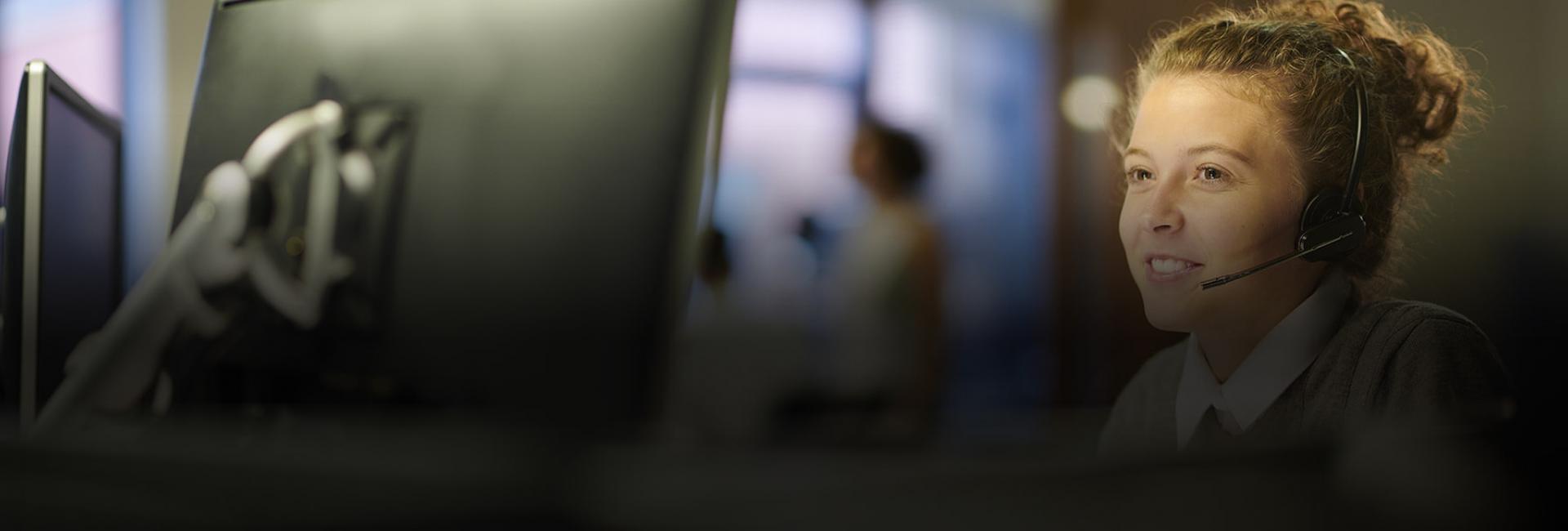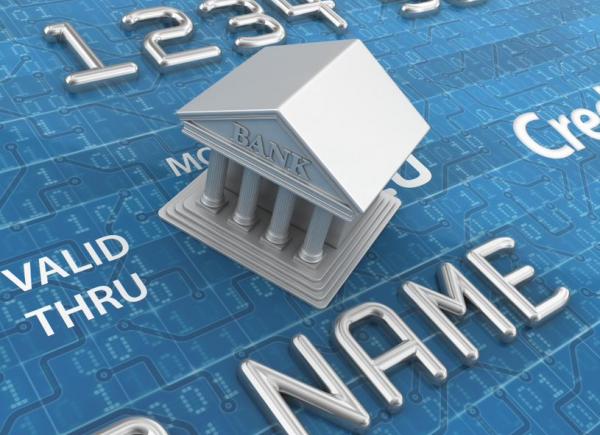By Vaidik Trivedi
Originally published by PaymentsDive
ast year was a transformational year for the payments landscape. Payment channels evolved to meet customer demand, and evolving threats of the COVID-19 virus.
Customers across the age spectrum quickly adapted to digital, contactless payment channels as social distancing rules were imposed for public safety.
According to a JP Morgan study released in Dec. 2020, "54 percent of consumers agreed that they use digital banking tools more due to the pandemic today than they did last year."
A need and expectation for real-time payments also surfaced as financially-strained people sought access to their funds with more urgency.
"The pandemic accelerated a lot of trends that were catching traction the year prior," Forrester analyst Lily Varon told Payments Dive. "Evolution from both the merchant and customer side picked up pace to evolve with changing market conditions."
Below are the top six payment trends that gained traction in 2020 and are set to evolve into mainstream payment models this year.
1. Deferred payments or Buy-Now-Pay-Later
Digitally deferred payments have been gaining popularity among users since 2019. In 2020, when finances were especially tight, customers pivoted to the buy-now-pay-later (BNPL) payment methods.
"As people struggled through the pandemic, buy-now-pay-later became a huge trend, embedding that within the purchasing that checkout," Brandon Rembe, chief product officer at Envestnet-Yodlee, told Payments Dive. "BNPL is allowing companies to service those types of clients that do want to pay over time."
There has been a huge change in the category and also just a general desire to remove friction around payments. Customers want a frictionless payment channel, while businesses want to hold on to their customer base and reduce transaction costs, Rembe said.
According to a Forrester webinar, nearly "36% of US online adults are interested in, currently use, or have used a "buy now, pay later" service for a large purchase."
Merchant adoption for such services has also increased as they are trying to meet customer demands for BNPL payment offering.
"In Jan 2020, 26% of the 100 U.S. retailers offered a deferred payment method," the Forrester webinar stated. "By December, that number had increased to 46%."
"The pandemic accelerated a lot of trends that were catching traction the year prior ... Evolution from both the merchant and customer side picked up pace to evolve with changing market conditions."
Traditional retailers Macy's, Gap and Neiman Marcus have started offering BNPL to credit card averse customers. "Many customers are using these services for better budgeting reasons," Varon said. "You can buy more and spread it across a longer period of time."
BNPL companies including Klarna, Affirm, Uplift and Splitit experienced significant growth in 2020 as customers' purchasing power dipped due to the pandemic. Splitit saw its customer base double while experiencing a 300% increase in revenue during 2020. Splitit also introduced BNPL services to the professional services sector last year, adding the option for customers to pay for professional services — such as accounting, dental and legal services — in installments.
BNPL services have been gaining momentum since before the pandemic, but the increased use of e-commerce last year fast-tracked customer adoption towards installment payments, Brad Paterson, CEO of Splitit, told Payments Dive.
Affirm went public at the start of this year to lean into its growth, and even released an Affirm card for customers to have more options for BNPL services. Nearly 13% of U.S. BNPL customers had used Affirm in Q42020, compared to 7% in Q12020.
Venture capital funding for BNPL services also skyrocketed in the past two years as this payment channel gained customers. According to Forrester research, VC funding for BNPL services jumped to $1.9 billion in 2020 from $1.8 billion in 2019, and up from $302 million in 2018.
While younger generations who are credit card averse gravitated to BNPL services, the adoption of this payment channel appeals across the age spectrum.
"Our data sort of shows that interest certainly is concentrated on the younger groups," Varon said. "But actually, usages are consistent across age groups."
Established payment giants Visa, Mastercard and PayPal (Pay in 4) have also started offering BNPL services to meet evolving consumer demand.
While BNPL services are gaining popularity and traction among consumers and businesses alike, they come with strings attached. Many people don't completely understand the BNPL service offering and get bogged down with hidden fees when they miss a payment. Returning a product bought through such payment options is also typically more difficult for a consumer.
According to a recent survey in the UK, nearly 20% of shoppers who opted for BNPL services for Christmas shopping are struggling to make payments on time. Such offerings can lead people to outspend their budgets and hurt their credit ratings when they miss payments.
In the U.S., BNPL has been flying under the radar as it's still in its early adoption stages. BNPL could be subject to scrutiny from the Federal Trade Commission (FTC) and Consumer Financial Protection Bureau (CFPB), which oversee lending practices for Unfair, Deceptive or Abusive Acts or Practices ("UDAAP"), if consumers are adversely affected by the payment offerings.
2. Digital payments
According to virology studies, the COVID-19 virus can survive on banknotes for up to 28 days, compelling consumers to pivot to digital payment channels to avoid contracting and spreading the virus.
Consumers adapted using digital payment channels such as tap-to-pay, e-commerce and digital wallet payments to avoid contact while making a payment. Mobile payments and digital wallets were two of the most popular payment types as they eclipsed cash transactions in 2020, according to a FIS report.
"Mobile wallet transaction counts doubled in the months following March 2020," David Shipper, an Aite analyst, told Payments Dive.
A Fiserv research study stated nearly 24% of respondents believed mobile payments were the safest to prevent the spread of the virus.
"Card issuers want to be 'top of the mobile wallet,'" Shipper said. "They are encouraging cardholders to add their card to their mobile wallet."
There are many benefits for card issuers to offer digital cards and digital wallets. Greater security leads to higher usage, increasing the likelihood the cardholder will carry a credit card balance, according to Aite research.
"Card issuers want to be 'top of the mobile wallet.'"
Digital wallet users are expected to exceed 4.4 billion globally by 2025, up from 2.6 billion in 2020, Juniper research stated. The total amount spent through digital wallets is also expected to nearly double to $10 trillion annually by 2025 from $5.5 trillion over the time period.
In the U.S., nearly $131.4 billion was spent through mobile payments, with 86.9 million users in 2020, up about 20% in dollar value from $110.5 billion, with 71.5 million users in 2019, according to eMarketer estimates from Insider Intelligence.
"Mobile wallet active cards are still less than 10% of total cards, so there is a lot of room to grow," Shipper said. "There will be continued growth in mobile wallet payments and digital card issuance."
Although on the rise, mobile transactions are prone to be targets of cyberattacks. Digital wallet transactions saw a 33% increase YoY in fraud attempts, while the average amount stolen from such transactions up by 9% YoY as well, according to a recent report from the digital fraud prevention company Sift. Consumer complaints to the CFPB also rose by 59% YoY regarding mobile and digital currency transactions.
Companies such as PayPal came out with QR codes to provide other digital payment channels for customers and merchants alike. PayPal and Venmo's QR codes are accepted at over 600,000 retail locations, Jim Magats, senior vice president of omni payments at PayPal, told Payments Dive.
"PayPal signed 29 large enterprises like CVS, Nike, Macy's and Foot Locker to its QR payment channel in 2020," Magats said. "We are seeing a 19% increase [year-over-year] in total payments volume for consumers who use our OR codes."
According to a McAfee report, rising mobile and QR code-based payments are not as safe as they might seem. QR codes provide scammers with a new avenue for disguising themselves as legitimate businesses and spreading malicious links.
Sound-based payment channels are picking up traction as they can process payments from farther away, with minimal new hardware and software solutions. LISNR, a Visa-backed tech startup that uses ultrasound technology for mobile authentication and payments, experienced a near 300% increase in transaction volume quarter over quarter (QoQ) during the pandemic.
3. Rise of e-commerce and embedded payments
U.S. retail e-commerce sales picked up during the lockdown as more people shopped online. In 2020, $794.5 billion was spent through e-commerce channels, surging 32.4% annually over 2019. E-commerce sales made up 14.4% of all sales in the U.S. last year, compared to 11% in 2019.
Amid store closures, retailers ramped up their e-commerce presence, including small businesses that hadn't sold online before. According to digital payments company Square, the share of businesses accepting online payments increased by 13.2% from February to July 2020.
Even in sectors that hadn't made much use of the channel, such as in sales of groceries and beverages, purchases grew 74% YoY in 2020, a rate more than triple that of 2019, Insider Intelligence report stated.
E-commerce adoption climbed across the age spectrum. Prior to the pandemic, older customers previously shopped online at much lower rates than younger adults. But seniors, who are most at risk from the virus, turned to digital avenues to reduce the health risk.
"We've kind of always felt that consumers were pretty slow at adopting new banking and payment habits," Sarah Grotta, Director of Debit and Alternative Products Advisory Service at Mercator Advisory Group, said during a webinar. "Yet, we really saw that consumers, customers and members will actually change their habits pretty quickly, out of necessity, or sometimes, when the right incentive is put in front of them."
Just 16% of internet users over 65 shopped online at least once a week in May 2019, "but 43% of that demographic reported doing so more frequently than in the past in 2020," Insider Intelligence report stated.
While in-store retail is bound to pick up as the pandemic subsides, the events of 2020 accelerated the shift to e-commerce by about two years, according to an Insider Intelligence report.
"U.S. retail e-commerce sales will account for $1 in $5 spent on retail by 2024," the report stated. "They'll account for $1.205 trillion, as online shopping experiences improve, retail stores close at record rates, and customers maintain habits forged in 2020 and 2021."
4. Real-time payments and ACH transactions
When finances were especially tight across the globe, consumers wanted access to their funds as soon as possible. With the rise of peer-to-peer payments (P2P), businesses also started expecting transfer to be more efficient and as quick as PayPal or CashApp transfers.
According to a JP Morgan study, gig economy workers, insurance claimants and small and mid-sized businesses (SMBs) expect to receive and access their funds immediately.
More than 70.3 billion real-time payment transactions were processed globally in 2020, a surge of 41% compared to the previous year, according to an ACI Worldwide study. With nearly 2 billion real-time payment transactions processed in 2020, North America is predicted to be the highest growth region by 2025, the study stated.
"In the U.S., we really didn't have a need for real-time payments for a long time ... But that is starting to change, as people are expecting more and financial institutions see an advantage to make payments faster."
Customers are pivoting to P2P apps for instant transactions as many financial institutions don't have the infrastructure to support real-time payments. According to a Mercatory survey, 70% of bank customers have used a P2P service at least once in the past year, Grotta said.
"You take a look at the number of money movement transactions that you as a financial institution might not be participating in because your members have to go somewhere else," Grotta said. "It really does make you [financial institutions] think about this, this could be a pretty important solution to offer."
Nearly 60% of the U.S. market expects real-time payments, according to the JP Morgan study. Many countries like the UK have been offering real-time payments since 2008, but "in the U.S. is the degree of complexity resulting from a far greater number of banks than in other countries," the study stated.
"In the U.S., we really didn't have a need for real-time payments for a long time," Grotta said. "But that is starting to change, as people are expecting more and financial institutions see an advantage to make payments faster."
The existing clearinghouses are owned by the largest financial institutions in the country like Wells Fargo, Bank of America and CitiBank, discouraging smaller financial institutions from joining the network because they don't want to use a competitor's services and pay for it, Grotta said.
The Federal Reserve Bank has started the FedNow project, which will bring all financial institutions into a real-time payment network. Nearly 200 financial institutions, including Visa, Mastercard and Temenos, have joined the project to help the Fed create a system that works with all financial institutions across the country, 365 days a year to provide real-time payments.
Automated clearing house (ACH) network payments also saw an uptick in 2020, as credit and debit transactions picked up due to online shopping. Many business-to-business (B2B) payments also pivoted to ACH payments, as it usually costs less than $1 per transaction, "making it an appealing option, particularly for high-value transfers," Insider Intelligence report stated.
ACH was created to digitally replace bank checks, but has swelled in transactions due to quick processing time and low costs associated with it. Despite slow economic activity, ACH payments smashed records in 2020, increasing by 8.2% to 28.6 billion transactions, according to Nacha.
5. Evolution of P2P payments
P2P payments started gaining popularity after the 2008 financial crisis, picking up significant momentum during the 2020 pandemic as well. What started as an efficient, easy and quick method to transfer funds and split pizza bills among peers has transformed into a multi-facet platform, serving almost as a bank.
Venmo, Zelle, and Square Cash apps have grown in popularity, with volume hitting $393.9 billion on the back of massive user growth in 2020, Insider Intelligence report stated.
"We saw a 24% increase of active accounts, almost 73 million net new accounts added, and nearly 41 payment transactions per account, all leading up to $936 billion in total payment volume in 2020," PayPal's Magats said.
Prior to the pandemic, mobile P2P growth had been decelerating as use among younger customers—its top demographic--became widespread. But with the pandemic, volume reached $393.9 billion in 2020, up 5% from $375.1 in 2019, and is expected to hit $538.7 by the end of 2022. The number of users also increased from 79 million in 2019 to 82 million in 2020 and is expected to hit 100 million by the end of 2024.
Gains were propelled by older customers in particular, who flocked to the services to replace cash and checks. Many payment platforms provided additional services like investment and trading, cryptocurrency transactions and debit card offerings to retain customers.
"Most digital P2P apps are looking for ways to generate revenue and are offering bank-like products and services to drive revenue," Talie Baker, a senior analyst at Aite said. "PayPal, Venmo, and CashApp have all ventured into crypto trading as a way to generate revenue."
PayPal believes digital currencies, central bank digital currencies and the collaboration with central banks and regulators will open new ways to exchange value and power global commerce and financial services. It has also helped in adding and retaining customers on the platform.
"Customers who have purchased crypto have been logging into PayPal at roughly twice their login frequency prior to purchasing crypto," Magats added.
P2P also helped serve SMBs during the pandemic, as they were looking for alternative contactless methods of accepting payments. PayPal and Venmo launched QR code payment methods for in-store payments, which helped many SMBs to accept contactless payments with low hardware integration costs.
"We processed over $20 billion of payment volume, with almost 10 million consumers using PayPal in store," Magats said. "Our products and services have never been more relevant and important for our customers than they are today."
PayPal has 29 million merchant accounts on its platform that use its QR code or P2P payment channels for accepting payments.
P2P payments are set to evolve even further in the coming years, according to Baker.
"I think that digital P2P payment methods are becoming more common for micro-businesses," Baker said. "And the play [trading and crypto investing] is most likely to be able to generate revenue from the app and secondarily to drive more consumer engagement."
6. Cross-border payments
In a globalized economy, a need for faster, cheaper and more efficient cross-border transactions is slowly becoming a necessity. Cross-border payments were growing steadily amid rising globalization and easier cross-border shopping prior to the pandemic.
According to a McKinsey report, cross-border payment flows totaled $130 trillion in 2019, generating payments revenue of nearly $224 million. In 2020, trade and travel halted, directly impacting cross-border transactions.
Visa's cross-border volume declined 29% in Q3 2020, after being up by 7% in Q3 2019, according to an Insider Intelligence report. Mastercard's cross-border volume sank 36%, compared with an approximate 16% increase in Q3 2019.
"We did see in 2020, a decline in payments activity, but in the fourth quarter of 2020 we already saw that volume bouncing back," Erika Baumann, an analyst at Aite, said. "We expect the volumes are going to continue to increase in 2021 and 2022."
"Businesses that are making cross border payments are getting frustrated with the friction and the cross border-payments process, and are looking for some alternatives to remove some of those pain points."
Reducing cross-border payments can be attributed to an old correspondent banking model that has been in place for over 30 years. It has a "multistep process with inherent issues that create friction in the process," Aite research stated.
"Businesses that are making cross border payments are getting frustrated with the friction and the cross border-payments process, and are looking for some alternatives to remove some of those pain points," Baumann said.
In the current antiquated correspondent banking model, a business sends payment instructions to its bank. The bank, which likely does not have a presence in the country of the recipient, will send that payment to a 'correspondent bank.' That bank will send it to another correspondent bank that will convert the payment into the recipient's currency.
A lot of innovation is happening in the cross-border payment landscape because traditional correspondent payment channels are clunky and can take days to process a transaction with comparatively high costs.
Emerging markets usually get left out due to the lack of infrastructure required for correspondent banking models. Still, correspondent banks continue to shrink.
"If you are in an emerging region, (such banks tend) to be high risk and low profit because you just don't have the same volume of payments," Baumann said. "And secondly, because the technology exists to make these payments easier."
Fintech companies and better technological models can help provide a better payment channel and reach emerging markets, Baumann said. This will create a space in the market that can lead to a rise in payment-as-a-service (PaaS) providers, Baumann said.
Visa, Mastercard, MoneyGram and others are coming out with services to better facilitate cross-border payments. MoneyGram recently launched a service to transfer money to a digital wallet from almost any place in the world, and now, the company will connect customers and vendors from around the world as well.
Visa also launched P2P and B2B cross-border payment channels to better facilitate faster payments, and recently expanded that network with the acquisition of EarthPort.
"Bigger financial institutions that have the means are building their own cross-border payment channels might try to do so," Baumann said. "While smaller FIs are looking to partner with fintech because it's comparatively inexpensive."




